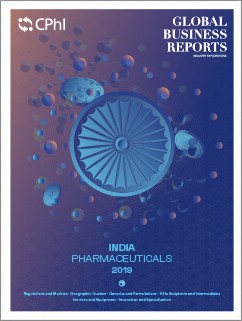
"India is witnessing a rapid growth in the biotechnology and life science sectors. With a clear shift in the pharmaceutical industry to biopharmaceuticals, in the agricultural industry to hybrids and green technology, in the energy industry to biofuels and with bioinformatics closing the gaps, India is a very attractive market for investment and R&D activities."
RELATED PUBLICATION
ARTICLES FROM THIS PUBLICATION
Neha Ramani
PARTNER, LEXORBIS
Could you provide a brief introduction to Lex Orbis and highlight the range of services it provides?
Founded in 1997, LexOrbis is amongst the fastest growing premier Intellectual Property (IP) firms in India having offices at three strategic locations: Delhi, Mumbai and Bengaluru. With a team of over 80 highly reputed lawyers, engineers and scientists, we act as a one stop shop and provide practical solutions and services on all IP and legal issues faced by technology companies, research institutions, universities, broadcasters, content developers and brand owners. Our services include Indian and global IP (Patents/Designs/Trademark/Copyright/GI/Plant varieties), portfolio development and management advisory, documentation services on IP transactions/technology-content transfers and IP enforcement and dispute resolutions at all forums across India. We have a global reach with trusted partners and associate firms in over 155 countries.
What is Lex Orbis’ contribution to the life sciences industry?
The life science team consists of 23 patent attorneys and 52 paralegals. Our team has experience handling the IP portfolios of several big, medium and small pharma companies from all over the globe, which is why LexOrbis is ranked amongst the top five firms for drafting and filing new patent cases in the field of life sciences.
What is your perspective on India’s changing innovation landscape?
The innovation landscape is changing drastically and for the better. Both small and big pharma companies are coming out with innovative products. There is a definite shift in the trend and focus of the pharmaceutical industry in India and across the globe from development of pharmaceuticals to biopharmaceuticals. Despite the heavy costs, infrastructure for R&D and excess time required in the development of biologics, we have seen a revamping of businesses, mergers and expansions to increase operational capabilities, as well as splitting, re-shaping and restructuring R&D by pharma companies to diversify into specialty medicine and biologics. It is an exciting time, with a promise of evolution of biopharmaceuticals and breakthroughs in life-changing and life-saving drugs such as we have never seen before.
What are the challenges you face while implementing legal help to the life science industry?
The patent laws in India have a few additional criteria for an invention to be patentable as compared to the US, EPO and other major patent filing countries. Section 3 of the Patents Act, 1970 lists what is not patentable in India. This list makes it difficult to patent any secondary uses of known compounds, methods of treatment, dosage forms etc. which may be patentable in other countries.
Furthermore, the Indian Patent office still has a huge backlog of pending patent applications. Since the patent term is only 20 years, it has become difficult for innovators to enforce their rights while the application is pending in case of infringement.
In terms the pharmaceuticals industry, what are current industry needs?
In terms of approvals, if you look at the regulatory framework there are two to three different agencies under different Ministries where you have to apply for various permissions and approvals. It would be more productive to have one single body for all regulatory approvals so that drug developers could apply through a consolidated and streamlined process. This would save time and resources.
In terms of IP, the government is already doing a great job in expediting the grant of patent and trademark applications. They have hired several examiners in the past few years for expediting the prosecution of patents. This is a big advantage to the life science industry as the companies can maximize their time of enjoying a monopoly in the market.
What is your outlook moving forward?
Our Mumbai office was designed specially to be accessible to our pharmaceutical clients in Western India. India is witnessing a rapid growth in the biotechnology and life science sectors. With a clear shift in the pharmaceutical industry to biopharmaceuticals, in the agricultural industry to hybrids and green technology, in the energy industry to biofuels and with bioinformatics closing the gaps, India is a very attractive market for investment and R&D activities. Along with technological growth, India is also witnessing rapid evolution in laws, rules and practices related to corporate and commercial transactions. Lex Orbis’ future perspective is to evolve and adapt in this dynamic environment and render customized services that truly add value to our clients’ businesses with due diligence, consciousness and promptness.











